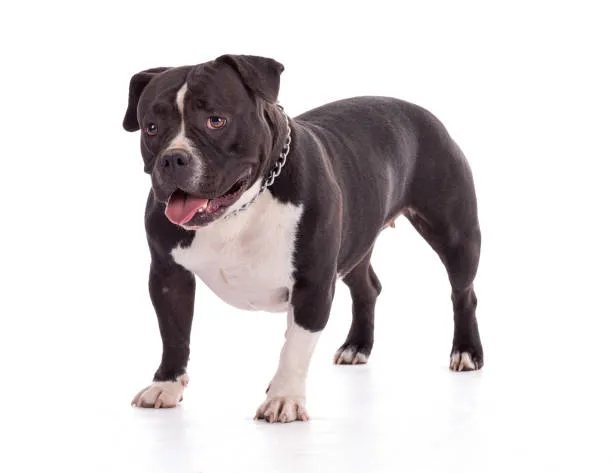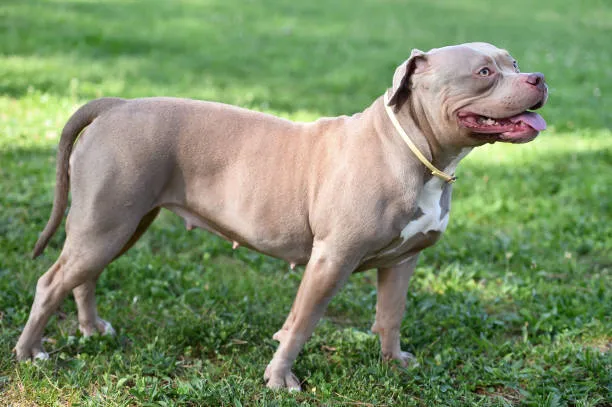American Bully/American Bulldog Cropped Tail are some of the most well-known breeds noted for strength, loyalty, and fearsome appearance. But while they might share quite a few things in common, cropped tails set these two breeds apart.

The American Bully has a short tail, and to achieve a more commandingly impressive look, some breeders have begun cropping the tails of American Bulldogs.
Surely this trend begs the question: Is it ethical or even practical? Let’s get into the hushed world of American Bully and American Bulldog cropped tails for a peek.
The American Bully/American Bulldog Cropped Tail
The difference between these two breeds is relatively odd because “American Bully/American Bulldog Cropped Tail” isn’t a breed or an accepted term for either one, making it hard to distinguish between the two.
American Bullies are a comparatively newer breed developed from various types of bulldogs, mostly characterized by a short body stocky build and broad head.
While American Bulldogs are a distinct breed of their own having a history that goes back to even earlier than the 1900s; generally, they are taller and leaner than American Bullies.
The History of American Bully/American Bulldog Cropped Tail
Understanding these breeds cannot be done without their place in history, thus explaining the variances between American Bulldogs and American Bullies:
American Bulldog Cropped Tail
This breed sort of evolved from farm- and ranch-work dogs in American history, they were bred with a lot of versatility to perform many tasks ranging from shepherding animals to guarding property, made precious for their strength, agility, and loyalty.
The American Bulldog finds itself originating with those early immigrants who brought their working dogs to America. This breed was crossed with other breeds over time to become the modern American Bulldog. These dogs were valued because they could assist with agricultural-related work.
American Bully
The American Bully is, however, relatively new. Emerging to become a companion type, it was properly bred in the late twentieth century. The breeders had the desire to have a dog with the same physical appearance as the American Pit Bull Terrier, but a more congenial and laid-back personality. The American Bully development was specially dedicated to family companions in a friendly and sociable context.
An American Bully is the result of cross-breeding the American Pit Bull Terrier, Staffordshire Bull Terrier, and other bulldog breeds. This type of breed was selective-bred to develop a smaller and more compact version of the American Pit Bull. This is why the new breed, indeed, will include traits from ancestors that preserve strong bulk but are gentler.
Similarities Between the American Bulldog and American Bully

It is also worth noting that the American Bulldog and American Bully share several characteristics in common. Both of these breeds are known to be devoted to their families.
These breeds are intelligent and trainable, however, American bulldogs may demand tough and consistent handling. Early socialization and training would benefit both breeds, resulting in well-rounded, well-behaved, and happy dogs.
Both breeds of dogs require frequent exercise to maintain their physical and mental health. They are best suited for owners who are very active and live in homes that give adequate mental and physical stimulation.
What are the Physical Characteristics and Breed Standards of American Bully/American Bulldog Cropped Tail?
American Bulldog Cropped Tail
Concerning external features, American Bulldogs surpass American Bullies in size and muscle development. Moreover, they have a powerful and robust structure, featuring wide chests and strong hindquarters.
Normally, American Bulldogs have square-shaped heads with a broad muzzle and strong jaws. Their short, dense coats are mostly brindle, white, or fawn.
The breed standard for American Bulldogs describes an athletic and strong breed. In all, the males weigh between 75 to 120 pounds, whereas the females weigh from 60 to 100 pounds. Males measure 22 to 27 inches high at the shoulder, while females range from 20 to 25 inches high at the shoulder level.
American Bully
American Bullies are of smaller size but compact. They are muscularly built with more exaggerated proportions compared to the American Bulldogs. This breed of Bullies usually have wider chests and more prominent heads. They have a short and broad muzzle that gives them an unusual but very commonly spotted appearance.
There should be proportion and balance in the breed standard of American Bullies. Males should earn between 65 and 80 pounds, while females between 50 and 65 pounds. In the height measurements, males should stand from 17 to 20 inches at the shoulder, while females stand between 16 and 19 inches.
Conclusion
Agility, health problems, and care are some aspects that either breed together with dissimilar physical characteristics, temperaments and origins may have in common. American Bulldogs are supposed to be bulkier and muscular dogs with bold confidence about themselves.
American Bullies are smaller and more muscular dogs with a very territorial nature consideration must be handed over to your lifestyle and preference before making your final decision to go for the bullies or bulldogs.
Active folks who do outdoor and sports activities regularly and are looking for protection and loyalty can opt for an American bulldog.
On the other hand, for those seeking social and friendly family pets which can mingle well among a lot of people, an American Bully will fit the bill perfectly!
In essence, the decision to keep an American Bulldog or an American Bully should depend on credible research and internalizing your diverse needs.
Understanding what distinguishes each breed and their fundamental characteristics will aid in making an emotional and influential life decision about the kind of furry companion you want.

